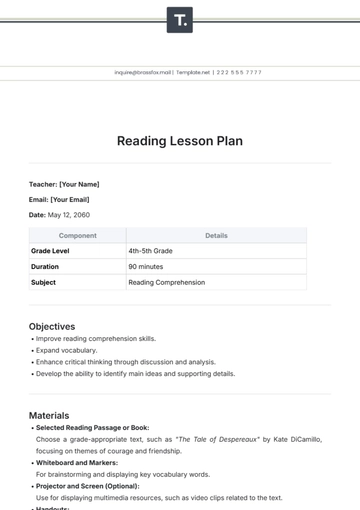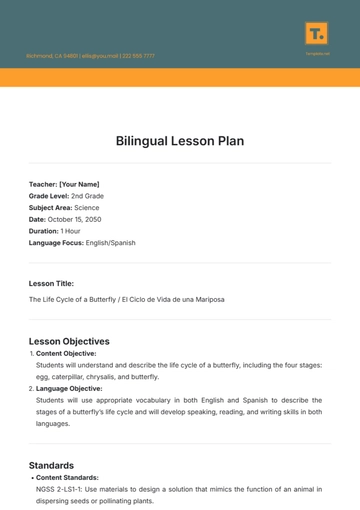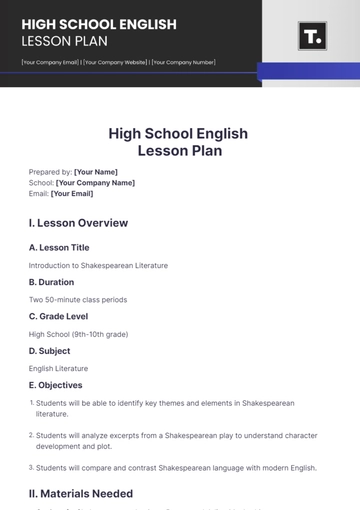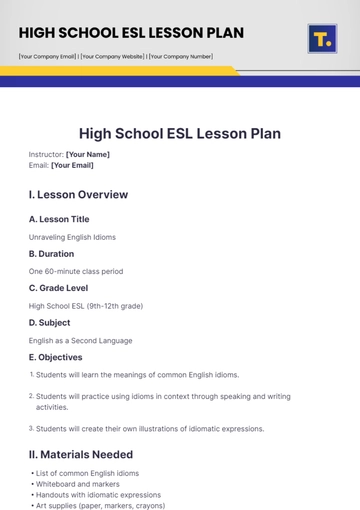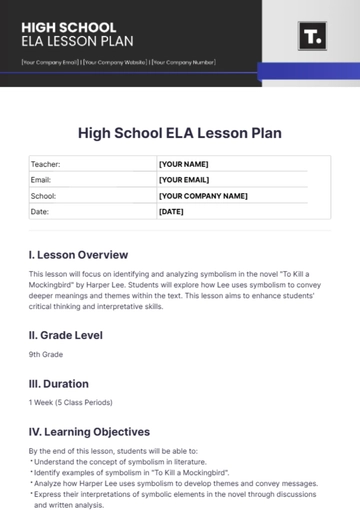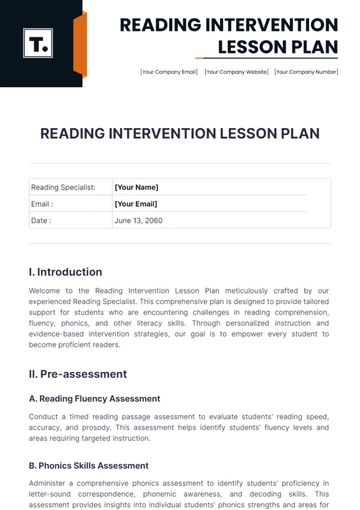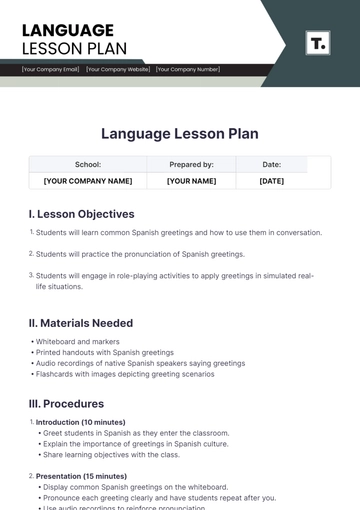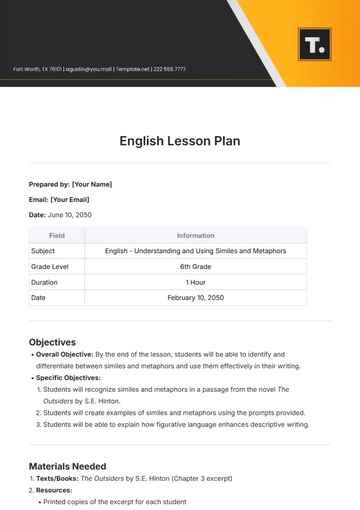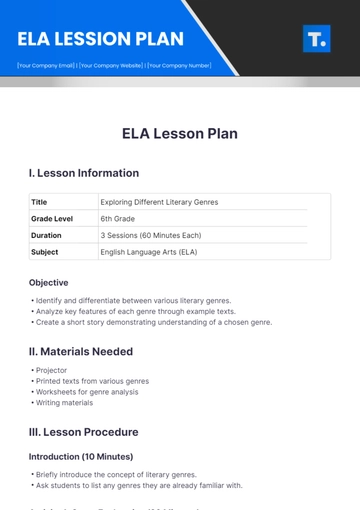Free High School ELA Lesson Plan
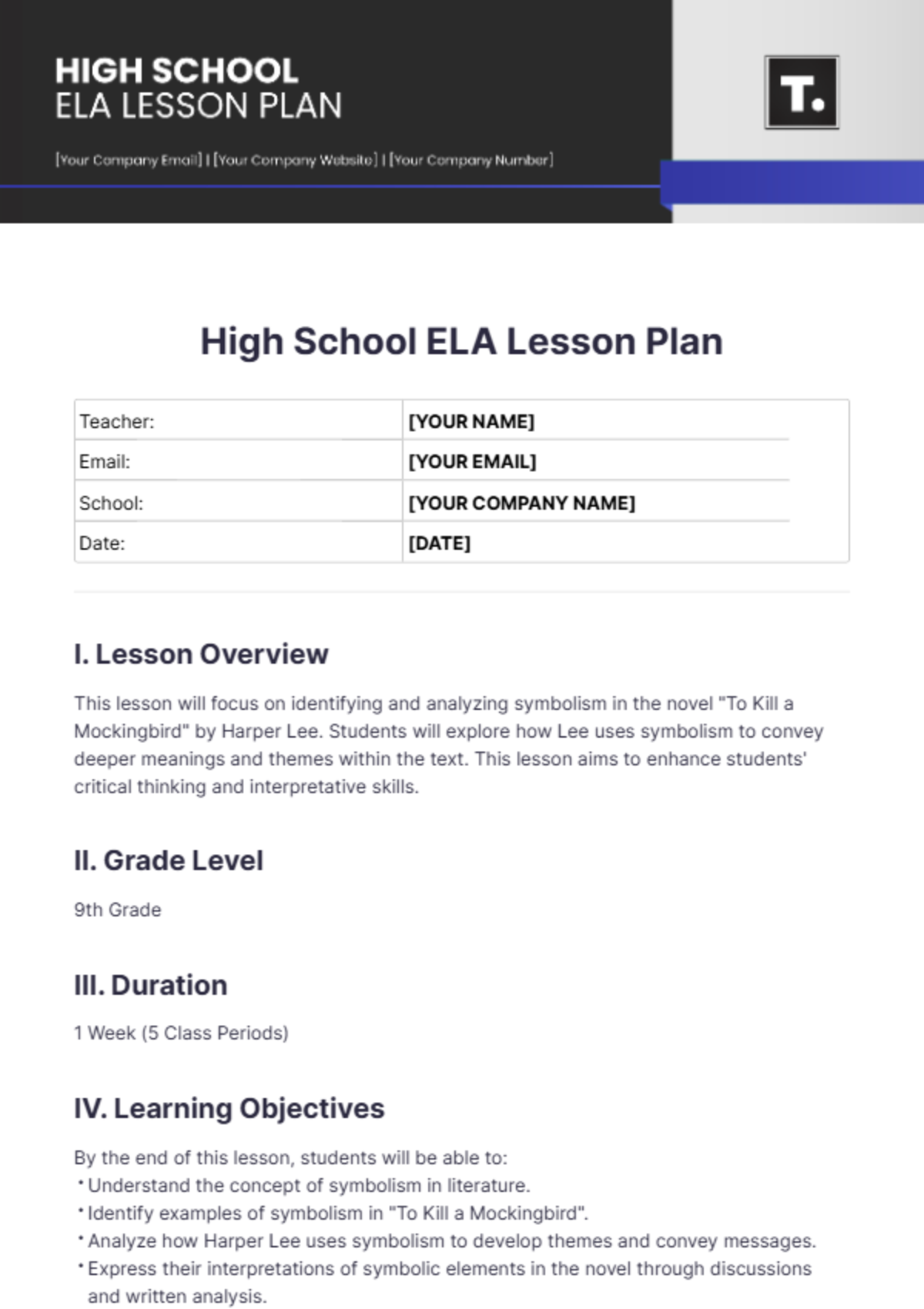
Teacher: | [YOUR NAME] |
Email: | [YOUR EMAIL] |
School: | [YOUR COMPANY NAME] |
Date: | [DATE] |
I. Lesson Overview
This lesson will focus on identifying and analyzing symbolism in the novel "To Kill a Mockingbird" by Harper Lee. Students will explore how Lee uses symbolism to convey deeper meanings and themes within the text. This lesson aims to enhance students' critical thinking and interpretative skills.
II. Grade Level
9th Grade
III. Duration
1 Week (5 Class Periods)
IV. Learning Objectives
By the end of this lesson, students will be able to:
Understand the concept of symbolism in literature.
Identify examples of symbolism in "To Kill a Mockingbird".
Analyze how Harper Lee uses symbolism to develop themes and convey messages.
Express their interpretations of symbolic elements in the novel through discussions and written analysis.
V. Materials Needed
Copies of "To Kill a Mockingbird" by Harper Lee
Notebook/journal for note-taking and assignments
Whiteboard and markers
Projector and computer for video clips and presentations
VI. Lesson Activities
Day 1: Introduction to Symbolism
1. Begin with a whole-class discussion on the concept of symbolism in literature. Define symbolism and provide examples from well-known texts.
2. Introduce "To Kill a Mockingbird" and discuss its historical context and major themes.
3. Assign chapters 1-3 for reading as homework. Ask students to note any potential symbols they encounter.
Day 2: Identifying Symbols in Early Chapters
1. Facilitate a discussion based on students’ homework notes. Identify and list potential symbols from chapters 1-3.
2. Introduce the symbol of the mockingbird. Explain its significance and ask for students' initial interpretations.
3. Assign chapters 4-7 for reading. Ask students to continue identifying symbols and take notes in their journals.
Day 3: Analyzing the Mockingbird Symbol
1. Focus today's discussion on the mockingbird symbol. Use specific passages to illustrate its role in the text.
2. Divide the class into small groups. Each group will analyze a different character who represents the mockingbird symbol (e.g., Tom Robinson, Boo Radley).
3. Have groups present their findings and discuss how these characters embody the qualities of a mockingbird.
4. Assign chapters 8-11 for reading. Ask students to pay attention to how the symbolism of the mockingbird is further developed.
Day 4: Broader Symbolic Elements
1. Discuss other symbols in the novel, such as the Radley house, the camellia flowers, and the courtroom.
2. Use a projector to show clips from the film adaptation of "To Kill a Mockingbird" that highlight these symbols.
3. Engage students in comparing their interpretations of the symbols in the text to their representations in the film.
4. Assign chapters 12-15 for reading, instructing students to keep track of symbols in a T-chart format.
Day 5: Culminating Activity and Assessment
1. Conduct a class debate on how effectively Harper Lee uses symbolism to address social issues. Provide specific examples from the text.
2. Conclude with a written assignment where students choose one symbol from the novel and write an analytical essay (2-3 pages) on its significance to the overall themes of the book.
3. Allow time for students to share their essays in small groups, providing peer feedback.
VII. Assessment
Students will be assessed based on:
Participation in class discussions and group activities
Completion and quality of reading notes and T-charts
Contribution to class debate
Final analytical essay on symbolism in "To Kill a Mockingbird"
VIII. Additional Resources
Visit [Your Company Website] for more educational materials and parent resources.
Connect with us on social media: [Your Company Social Media]
This lesson plan was prepared by [Your Name]. For further questions, please contact [Your Email].
- 100% Customizable, free editor
- Access 1 Million+ Templates, photo’s & graphics
- Download or share as a template
- Click and replace photos, graphics, text, backgrounds
- Resize, crop, AI write & more
- Access advanced editor
Elevate your High School ELA lessons with our meticulously crafted Lesson Plan Template from Template.net. Streamline your curriculum design process with this editable and customizable tool. Harness the power of technology with our AI Editable Tool, ensuring efficiency and flexibility. Craft engaging lessons tailored to your students' needs effortlessly. Unlock your potential with this essential resource.
